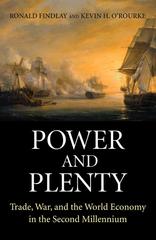Question
Short-Answer and Algebraic Questions: (The numbers in square brackets give the breakdown of the points for various parts of each question. To receive full credit,
Short-Answer and Algebraic Questions: (The numbers in square brackets give the breakdown of the points for various parts of each question. To receive full credit, please explain your answers. Total of 60 points.)
1. In the last quarter of 2019 (2019Q4) just before COVID-19 pandemic hit the United States, the economy's real GDP, Y, was $19.25 trillion (in constant 2012 U.S. dollars). At that time, GDP deflator, P, was 1.13, money supply, Ms, was $4 trillion, and the nominal interest rate, i, was 1.5 percent (i = 0.015). Assume that the money market is always in equilibrium. As you know from Module 4 materials, money demand is represented by Md = kPY/i, where k is the propensity to hold money. (Please use the units given in the exercise setup in the formula: e.g., Y and M in trillions of dollars; i in decimals; P as given; etc.).
(a)What was the propensity to hold money in the U.S. in 2019Q4 (i.e., what was k)? Please round the answer to 5 decimal points and show your calculations. [5]
Answer:
(b)During the COVID-19 pandemic in 2020, the Fed increased the money supply dramatically. In 2021Q1, the money supply had reached $18.4 trillion, while real GDP was $19.1 trillion, GDP deflator was 1.15, and the interest rate was 0.08 percent, i = 0.0008. What was k in the U.S. in 2021Q1? How does the magnitude of this value compare with the value of k you found for 2019Q4 in part (a)? Please round the answer to 5 decimal points and show your calculations. [5]
Answer:
(c)In the situation described in part (b) above, we want to know the extent to which the change in the propensity to hold money, k, helped or hindered the Fed's effort to lower the interest rate. To explore this issue, suppose in 2021Q1 when the money supply reached $18.4 trillion, k had remained the same as it was in 2019Q4, which you found in part (a). What would have been the equilibrium interest rate in 2021Q1 in that case? How does this interest rate compare to 0.08 percent that actually prevailed in 2021Q1? Did the actual change in the propensity to hold money help or hinder the Fed's goal of lowering the interest rate? Please express your answer as a percentage, round to 3 digits after the decimal point, and show your calculations. [7]
Answer:
(d)Currently, the U.S. money supply is $19 trillion. In summer of this year, 2021Q3, real GDP is expected to reach $19.8 trillion and GDP deflator to be 1.17. If the propensity to hold money k remains at the level you found in part (b) above and the Fed wants to set the interest rate at 0.1 percent (i = 0.001), how much money should it inject or withdraw from the money market? Please express your answer in trillions of dollars, round it to one digit after the decimal point, and show your calculations. [8]
Answer:
(e)In part (d) above, suppose in 2021Q3 the propensity to hold money reaches k = 0.00095 rather than staying at its 2021Q1 level. Given the current money supply and expected GDP and deflator mentioned in (d), if the Fed wants to keep the interest rate at 0.1 percent (i = 0.001), how much money should it inject or withdraw from the money market? Please express your answer in trillions of dollars, round it to one digit after the decimal point, and show your calculations. [5]
Answer:
2. This questions is based on the article, "Central banks should consider offering accounts to everyone," published by The Economist on May 26, 2018. The article examines the idea that people are allowed to open accounts at the central bank so that quantitative easing (QE)i.e. injecting large amounts of newly printed cash into the economycould be conducted directly through those accounts rather than indirectly via banks, as is the current practice. The article also argues that using electronic money for such accounts may enable the central bank to connect with the population and manage its monetary policies more directly, rather than going through the banking system, as is currently the case.
(a)According to the article, one consequence of individual central-bank accounts is that the central bank could gain more direct control of money supply. How does the banking system work right now, and who are the intermediaries between the central bank and the population? How may these intermediaries interfere with the monetary policies propagated by the central bank? And how would the proposed individual central-bank accounts impact monetary policy? [6]
Answer:
(b)According to the article, a second consequence of individual central-bank accounts is that it enables the central bank to implement QE policies more effectively. Why is this the case and what are its potential benefits? What's the connection of the individual central-bank accounts idea to 'helicopter money' and the unique advantage of the central bank over commercial banks in its administration? [8]
Answer:
(c)According to the article, individual central-bank accounts can change some of the political constraints on monetary policy, especially from the perspective of equity. Why is this the case and what are its potential benefits? [5]
Answer:
(d)According to the article, individual central-bank accounts may also create more competition for deposit-taking banks. Why is this the case and what are its potential benefits? [5]
Answer:
(e)According to the article, what are the potential pitfalls of individual central-bank accounts? [6]
Answer:
Step by Step Solution
There are 3 Steps involved in it
Step: 1

Get Instant Access to Expert-Tailored Solutions
See step-by-step solutions with expert insights and AI powered tools for academic success
Step: 2

Step: 3

Ace Your Homework with AI
Get the answers you need in no time with our AI-driven, step-by-step assistance
Get Started


